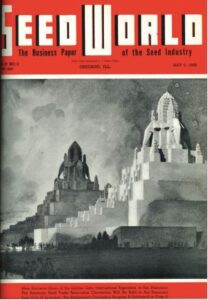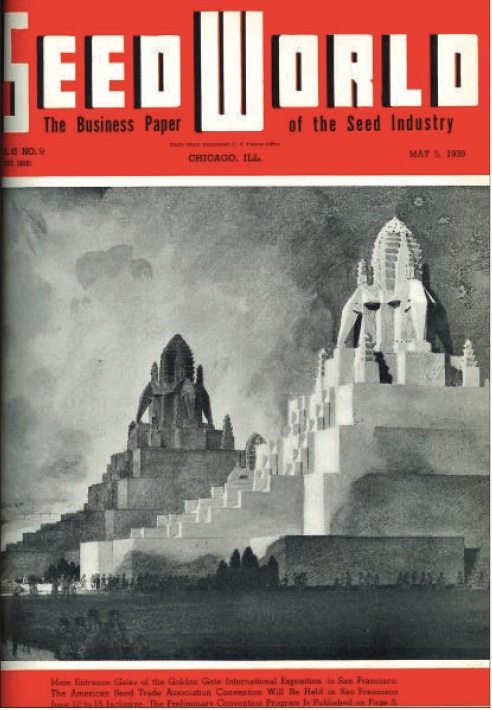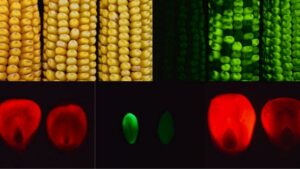
The cover from May 1939 shows the main entrance gates of the Golden Gate International Exposition in San Francisco, California, where the American Seed Trade Association held its convention.
This issue examined a “very important” plant called the soybean, introduced to America from Japan in 1854, when a red and white variety were brought back to U.S. and gained favor as a forage crop. A few decades later, the Department of Agriculture began to import other varieties.
As of 1939, many hundreds were available, though only about 50 were grown.
“As we now grow about 7 million acres, this crop is pretty well known, especially in the Corn Belt, where it does best. Let us look at what’s being done by the Ford Motor Company. They started in 1932 with a planting of 8,000 acres and tried out some 300 varieties; now they use 20,000 acres and are expanding. The beans, after threshing and cleaning, go into storage, from which they are drawn as required and used to make oil. Of the oil, a gallon per car is used, half in enamel, and half in glycerin for the shock absorbers.”
FACTS AND FIGURES FROM THIS 1939 ISSUE:
5,000 years is approximately how long the Chinese have been growing soybeans.
15¢ is the value of a dozen eggs.
$13 million is what the 1938 malting barley crop is valued at.
$7 is the price per bushel of hybrid corn.
980,000 bushels of winter wheat are forecast for the winter wheat crop.












